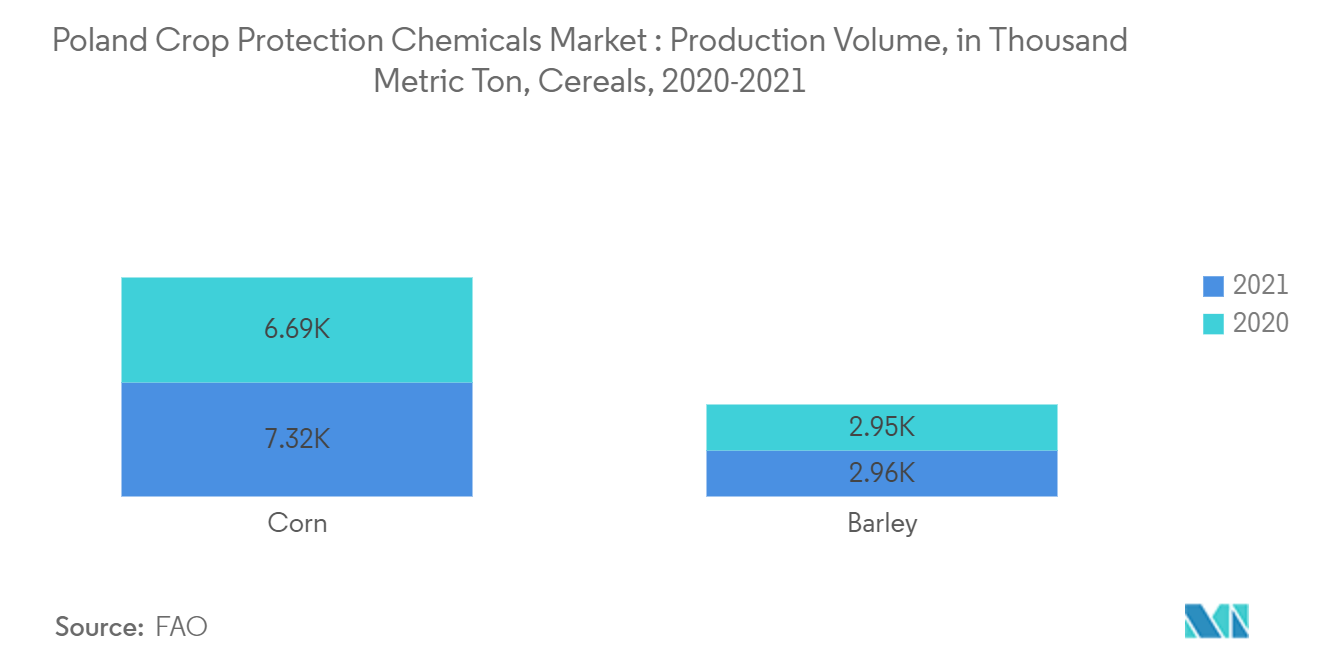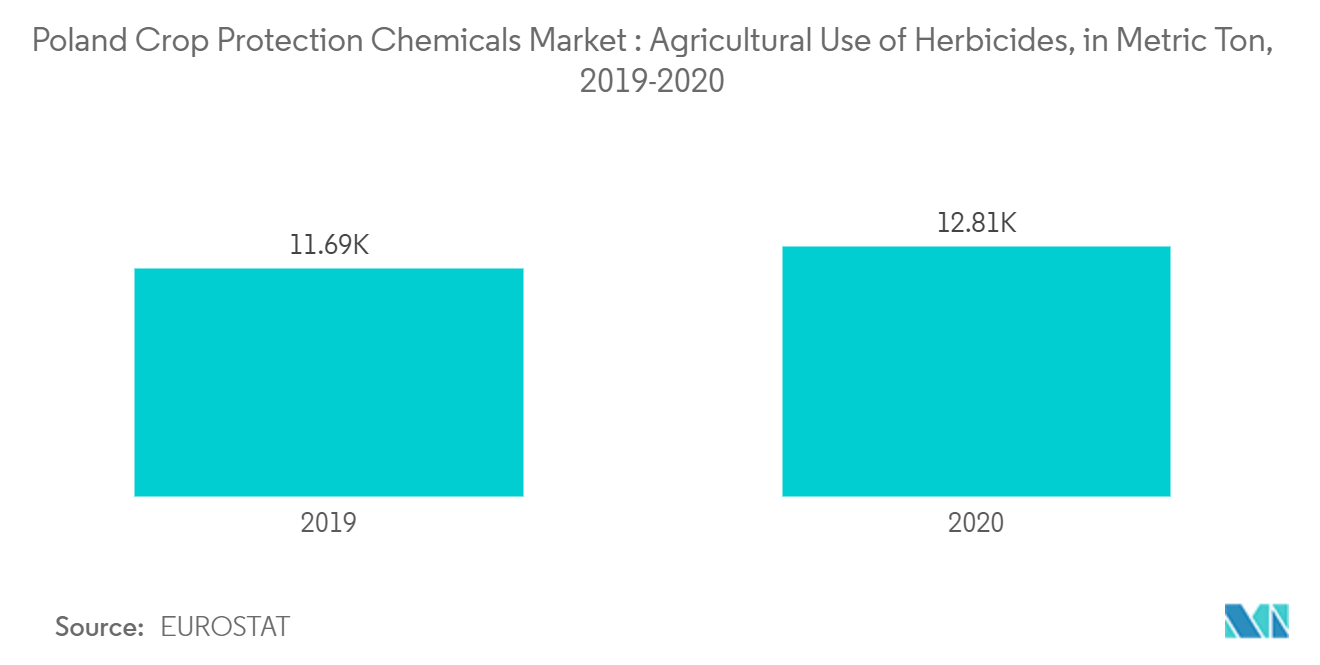Market Trends of Poland Crop Protection Chemicals Industry
This section covers the major market trends shaping the Poland Crop Protection Chemicals Market according to our research experts:
Increase in Grains and Cereals demand is driving the Market
Poland is one of the largest producers of grain and cereals and the largest producer of triticale in the world. In 2020, it was ranked 3rd after France and Germany in terms of harvested crops. Grain and cereal products are of strategic importance in the whole world economy, also in Poland. They are essential ingredients of food; they are used in distilling, brewing, milling, and industrial, energy, and pharmaceutical sectors.
Cereals such as wheat, corn, barley, triticale, and oats are the major crops grown in the country. According to the Food and Agriculture Organization of the United Nations (FAO) statistics, the area under cultivation for mixed grains has increased from 590.4 thousand hectares in 2020 to 653.8 thousand hectares in 2021. This, in turn, explains their predominance in the total volume of plant protection chemicals in the country. The most important active substance used on this crop includes herbicides isoproturon and 2,4-D. With extensive cultivation of grains and cereals carried out across various parts of the country, the pesticide market application on grains and cereals is projected to grow during the forecast period.

Herbicides Dominate the Market
Herbicides are chemical agents that are used to kill or inhibit the growth of unwanted plants, such as residential or agricultural weeds and other invasive species. The ease of application is a big advantage of chemical herbicides over mechanical weed control methods. This also helps save labor costs.
The most widely used synthetic herbicides in Poland include glyphosate, 2 and 4-D, atrazine, glufosinate-ammonium, paraquat, pendimethalin, dicamba, fluroxypyr, and metolachlor. However, the growth of the market is mostly driven by glyphosate. Further, there is a huge growing demand for bio-based herbicides. Bio-based herbicides are made from renewable resources and are predicted to be the fastest-growing herbicide product class shortly. The chemicals utilized in herbicide manufacture include amide, sodium chlorate, and sulfuric acid, to name a few.
Although they constitute only a small part of the industry, it is expected to grow at a significant rate during the forecast period. Major plant protection manufacturing companies such as Ciech Group are strengthening their position in the market by launching products that cater to the needs of Polish farmers. For instance, in the year 2021, the CIECH Group launched Halvetic and made a very successful debut in Poland, strengthening the position of CIECH Sarzyna in the glyphosate segment, in which the company has a share of about 50% by intensive abroad expansion across the globe.

